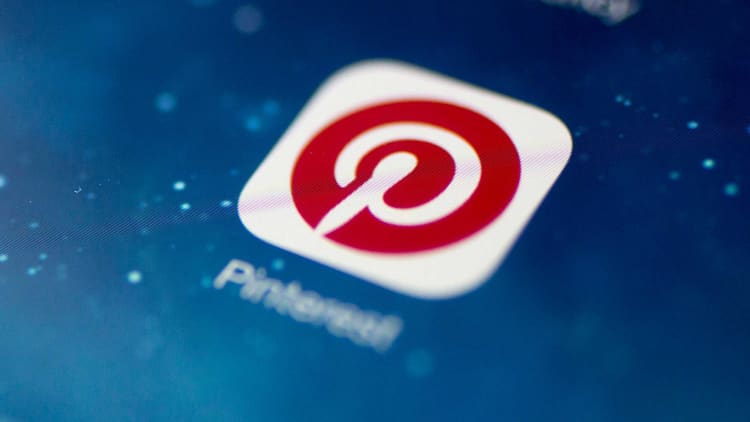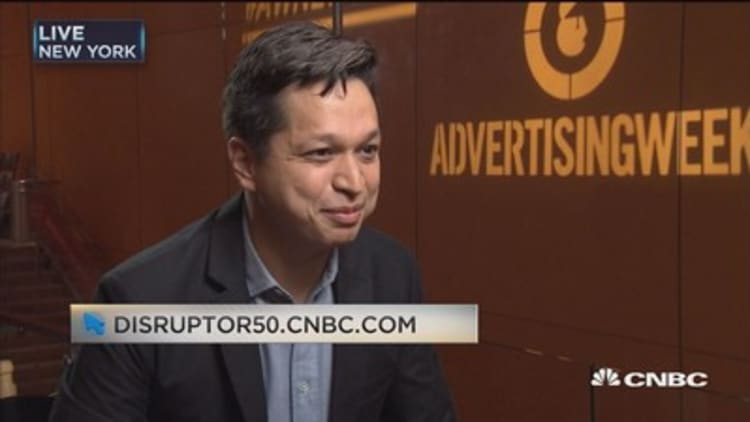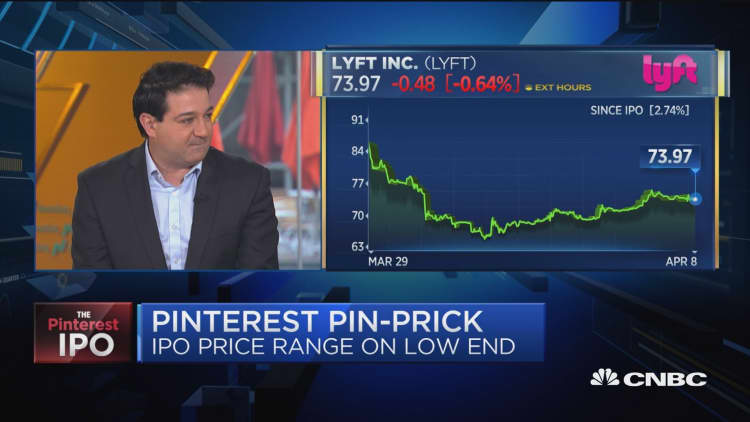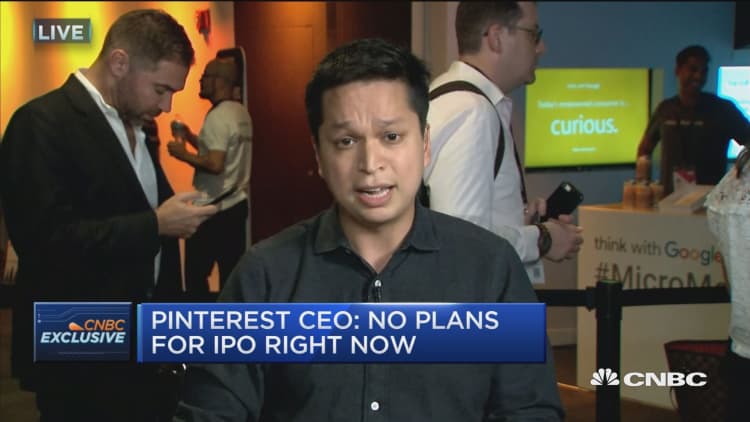In late 2017, Pinterest CEO Ben Silbermann sent a companywide email urging his employees to make decisions more quickly.
People who received the message had a different takeaway: Employees were being too nice.
Silbermann advised employees to not always wait for a consensus before acting, and to take more ownership. Multiple current and former employees say the email underscored a larger problem that was brewing at the photo-sharing social network. "Pinployees," as Pinterest employees call each other, emphasized a work culture where everyone was warm and respectful, or "pinterestly" to one another, former employees say.

This often translated to slow decision-making by committee and lack of commitment to strategic direction. Instead of being straightforward and advocating directly for what they wanted, employees were encouraged to try to gain consensus through politicking and endless rounds of meetings.
"The knock on Pinterest is everyone was so nice," a former executive who left the company in early 2018 told CNBC. "No one was willing to offend anyone."
The problem shows how good intentions meant to create a friendly work environment and build consensus can run into conflict with efficiency and adaptability — an issue Pinterest may grapple with as it prepares to go public this spring.
Launched in 2010, Pinterest is an online social network where users can bookmark images they find on the internet by "pinning" them to their "boards." It makes money by competing in the $300 billion digital advertising market against Facebook and its photo-sharing service, Instagram, as well as Google and Amazon.
But the company is seeing slower growth than previous companies in the space, such as Snap. In 2017, only six years after its founding, Snap went public at a $24 billion valuation. Although Snap's stock price has since been halved, investors at the time believed the valuation was justified, as the company's revenue was exploding, growing more than fourfold between 2015 and 2016.
By way of comparison, Pinterest is seeking a valuation of up to $9 billion — that's down from its last private valuation of $12 billion two years ago. The company is showing slow if steady growth: It booked $756 million in annual revenue last year, up 60% from 2017. But that's far lower than projections of $2.8 billion in a leaked 2015 presentation from early investor Andreessen Horowitz (although one person familiar with the matter said the projections in that presentation were not the same as internal Pinterest numbers).
Interviews with 20 former Pinterest executives, employees and contractors who spoke about their experiences working at the San Francisco start-up reveal instances where a lack of direct feedback and quick decisions resulted in employee turnover and competitive missteps.

The people interviewed pointed to two instances where being indecisive and reluctant to commit hurt the company's chances of competing with its larger rivals on new e-commerce and video features. Meanwhile, a number of executives have recently left the company, including Jon Alferness, senior vice president of ads and commerce, and Li Fan, head of engineering.
Pinterest declined to comment on specifics for this story.
"We aspire to create a culture where people feel respected and valued. As a result, we are deliberate about the decisions we make and that's why a quarter-billion people come to Pinterest every month to get inspiration for their lives," a Pinterest spokeswoman said.
'Choose your words carefully'
Since the early days of Pinterest, Silbermann, a former Google employee, and co-founder Evan Sharp, formerly of Facebook, placed a priority on creating a corporate culture that would entice top talent away from larger tech companies.
The culture stands out from other high-growth tech companies where confrontation and debate are actively encouraged. For instance, Amazon CEO Jeff Bezos advises employees "disagree and commit" — in other words, disagree openly, but when a decision is made, back it to the fullest. Netflix is known for a culture of radical transparency, where employees offer blunt feedback and air public postmortems when colleagues are fired.
Pinterest has always wanted to be different.
"They wanted it to be truly progressive," said Kent Buller, Pinterest's controller until late 2017. "As long as you're working on your business objectives, we're going to make this experience world class."
That entailed building an environment where people could do great work without having to be cutthroat with each other, people interviewed said. But the philosophy sometimes backfired.
An employee who left in 2018 recalled that during her job interviews, the hiring managers all mentioned how nice everyone was. This was reiterated after she started, when she tried to be direct with one of her colleagues.
"It was encouraged to me by my manager at the time who hired me, 'Just be aware and choose your words carefully around certain individuals,'" she said.
Pinterest tried to encourage employees to be more forward with each other through an internal ad campaign in 2016. The company plastered brown construction-paper posters throughout its conference rooms that read "Say the hard thing" in bold red letters, according to many former employees.

The idea behind the campaign was that "creative conflict will be a good thing for our company," Buller said. "As long as it's creative and positive, the effects of it will be positive."
Despite the campaign, people had little incentive to be upfront, said multiple employees who left the company in recent months.
One employee on the product team said she was let go from the company days after criticizing a strategy by one of Silbermann's staffers during a meeting with her manager and team. Her manager told her that she was an insubordinate and did not understand proper workplace communication.
"It was a really, really weird passive-aggressive culture," she said. "It was not a culture (where it was) encouraged to talk about problems."
A 'missed opportunity'
Pinterest may have good reason to encourage employees to be more forward if it prompts clearer decision-making: The company will come under even more pressure to grow after it goes public.
The former employees pointed to two instances where the company's indecisiveness hurt its competitive ability.
In 2014, the company began to discuss adding e-commerce features. But the process dragged on through meeting after meeting, and months went by without progress, said a former executive. E-commerce became "a huge chafing point for a lot of people," said a former employee.
After much deliberation, the company finally introduced a "Buyable Pins" feature in mid-2015 that let users buy products directly from retailers without leaving Pinterest. It didn't catch on with retailers or users, but instead of recommitting to the project and figuring out how to fix it, Pinterest gradually abandoned Buyable Pins. In October — more than three years after e-commerce features were introduced — the company finally replaced it with a new feature called Product Pins that links users to retailers' websites where they can buy products.
One executive who left last year said the new product is less likely to be successful, as ultimately people want to buy products in the same place or on the same services where they discovered them. Another former employee described Pinterest's slow-moving e-commerce plans as a "missed opportunity."
Pinterest similarly waffled on adding video to its platform, a feature that former employees consider to be an important way to attract advertisers. Silbermann was staunchly against the idea to the point where he wrote an internal blog saying there would never be video on Pinterest, a former employee said. In 2016, Silbermann relented, and the company added video pins. When the feature failed to make an immediate impact, Silbermann quickly deprioritized the feature by moving engineers from it onto ad products, an executive who left in 2017 said.
"When something like video didn't immediately jump off the page, they said 'Well hey, let's not scale this too fast,'" he said.
A Pinterest spokeswoman said the company would continue developing e-commerce features based on response from Pinners, or users. Video is a continued focus for the company, she said.

The decisions on the e-commerce and video features were in part fueled by Silbermann's slow and deliberate approach to decision-making, former executives said. They noted that he's a thoughtful leader who likes to have as much data as possible before deciding.
It's a sharp contrast with Facebook's early ethos of "move fast and break things," which encouraged employees to make decisions fast and fix any problems as they cropped up.
"Ben had such a concern that he would screw up the experience for the Pinners that he wasn't willing to try things," an executive who left in 2015 said.
The consequences of being nice
But people interviewed cite other instances where the company faced setbacks not only because of Silbermann's cautious approach, but because people were reluctant to make decisions for fear of upsetting fellow employees.
For instance, meetings at Pinterest were often a showcase of employees' capability to deflect, they said. Rather than give feedback directly, employees would schedule more meetings. Positive feedback was shared in public, while negative feedback had to be held inside or delivered later.
In one instance, the company was working with Coca-Cola on a big summer retail advertising campaign, a former marketing contractor said. Pinterest's creative team would present pitch decks, and employees from a variety of Pinterest's departments would praise the project — only to email later with suggestions.
The manager on the project encouraged her workers to implement the changes each time. After six months and many meetings, the project "was in no different stage than when I had started," the contractor said. Coke did not respond to a request for comment on the campaign.
Organizations should want employees to be cordial and friendly, but that becomes a huge problem if being nice trumps giving good, candid feedback, said Jennifer Chatman, professor of management at University of California Berkeley Haas School of Business.
"Good feedback is not always nice feedback. It's feedback that makes an idea better," said Chatman, an expert on organizational culture. "You can't always get there just by congratulating people."
A lack of candor may also be hurting the company's ability to retain talent. Silbermann tends to offer newly hired executives a honeymoon period, but he is not one to tell those executives when they have fallen out of favor, according to multiple former employees. Rather, executives come to the realization when their projects aren't given priority — or when they are let go.
"It felt very passive-aggressive, cutthroat," said a former executive, who was pushed out after his boss had fallen out of favor with Silbermann. "If you were out, they wouldn't tell you."

This way of dealing with deputies has resulted in high turnover, multiple former employees said. Since 2017, the company has lost two heads of human resources, a senior vice president of engineering, the company president and a senior vice president of ads and commerce, among others.
The upside of nice
Being nice has worked for Pinterest in some ways, and a slower pace of decision-making isn't always a bad thing. The company has avoided the types of scandals around fake news, inappropriate content and abuse of user data that have plagued Facebook, Twitter and Google.
In 2018, the company launched a feature that lets users pick their skin tone so Pinterest can deliver more relevant results when they search skin-care products and cosmetics. Pinterest began developing the feature after users complained that the majority of results were photos of people with light skin, multiple former employees said.
But there was some concern over what Pinterest would do with the skin-tone data it was going to collect from users, an executive who left the company in 2018 said. There was discussion of letting advertisers leverage the information to target users, but an employee on the company's policy team spoke up against that idea, citing concerns about potentially allowing advertisers to target by race. Ultimately, Pinterest settled on a conservative approach and decided against opening up the data for ad targeting, the executive said.
Pinterest's slow and cautious approach has also led it to be fiscally responsible, according to some former employees.
"There's growth," said one of the executives who left the company in 2017. "It's not hyper-growth, but it's consistent and you can rely on it."
Still, the company could face challenges in competing with its larger rivals for share of the digital advertising market.
"On one hand, a more affluent user attracts advertisers, but with only 10 to 20 percent of the audience of Facebook, and the targeting both Facebook and Google can offer, how does Pinterest stay compelling to advertisers?" said Daniel Newman, principal analyst at Futurum Research, which focuses on digital technology.
Meanwhile, changing long-standing cultural norms is easier said than done, former employees said.
A few weeks after Silbermann's 2017 email calling for people to move faster and forgo consensus building, one employee heeded the CEO's instructions and asked her manager if they could move forward with an important decision for their team.
The manager urged the employee to have more meetings with other departments and ensure she got buy-in from all of them. The employee cited the CEO's email, but it was quickly dismissed. "Yeah, I don't think that really applies to us," the manager said.
"I said at some point, we should be the decider because getting consensus would take too long," the employee said. She added that the process went on for months until she eventually left last year.






